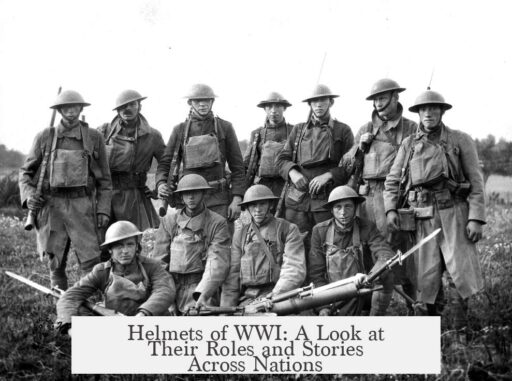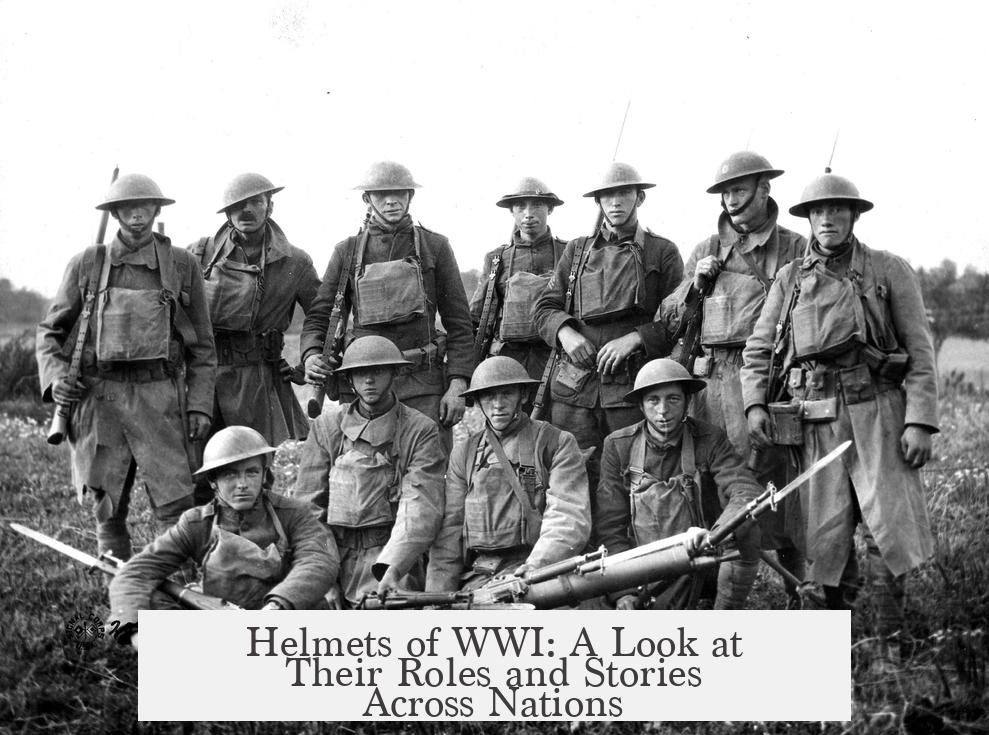Helmets of WWI reflect varied designs and practical adaptations among the nations involved in the conflict. German helmets stand out for their distinctive style and functional protection. Early in the war, German troops wore the Pickelhaube, a spiked leather helmet. It featured a pointed spike on top, originally intended to hold horsehair plumes for cavalry units. This spike, while iconic, was not meant for combat use like a bayonet. Later, Germany introduced the steel Stahlhelm, a trench helmet with a design that resembled Darth Vader’s helmet. This new helmet offered improved protection, notably covering the cerebellar region of the brain, reducing fatal injuries in that area.
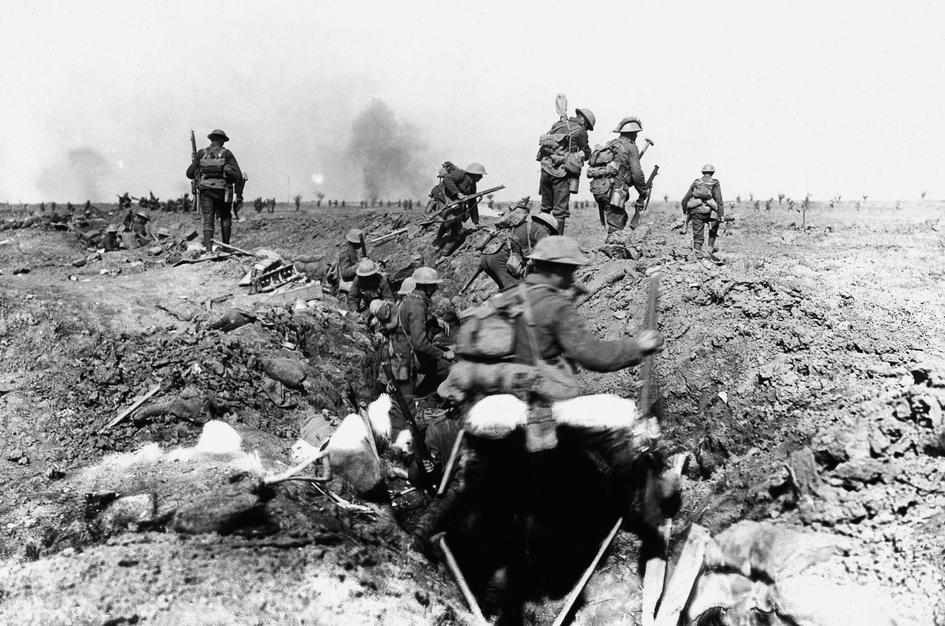
British and American helmets had a different appearance. Their design resembled a skillet or bowl shape, covering mainly the top of the head. Many critique this style as less protective compared to the German Stahlhelm. Despite this, these helmets were widely issued and have a distinct silhouette that resembles the “Proof of Purchase” item in the video game Team Fortress 2 (TF2).
Russian helmets in WWI were rare and limited in issuance. One example is the “Helmet of Yaroslav Mudry,” which saw use especially among cavalry. Like the Prussian models, some Russian helmets incorporated a spike intended to hold decorative horsehair plumes during formal occasions. These designs highlighted a mix of tradition and evolving military needs.
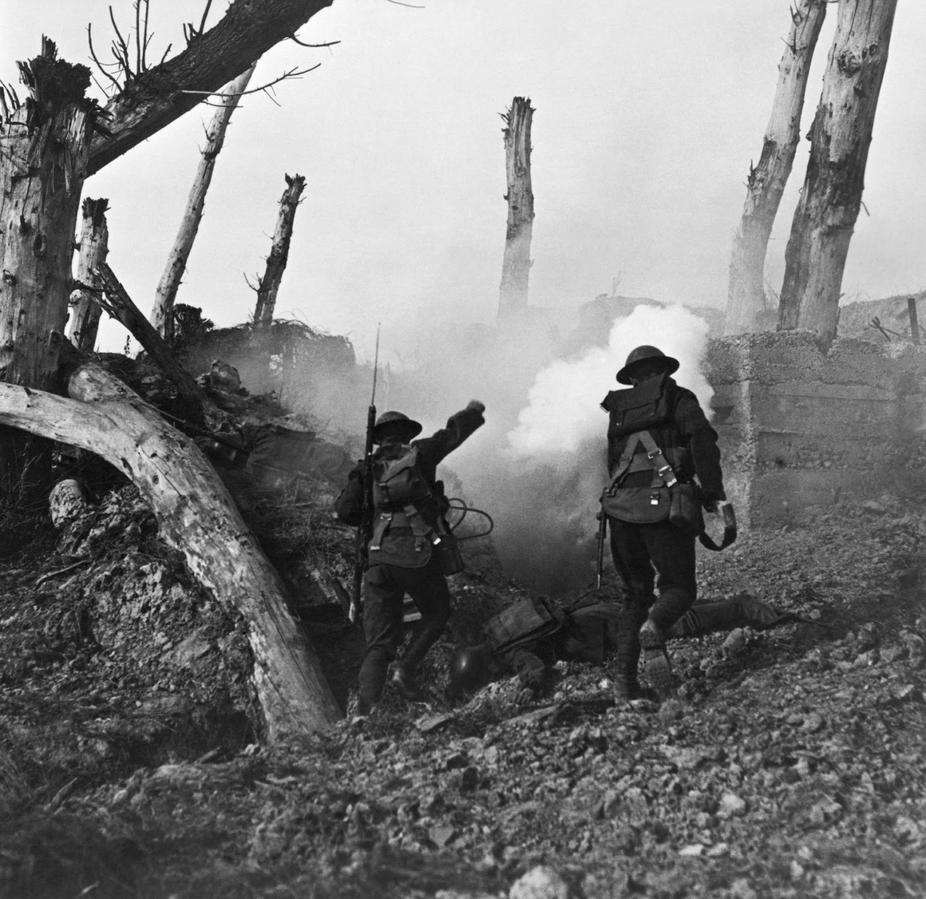
- German helmets transitioned from the leather Pickelhaube to the steel Stahlhelm.
- The Stahlhelm’s design provided superior protection, including the cerebellar area of the head.
- British and American helmets had a skillet-like shape that offered less coverage.
- Russian helmets were rarely used but included cavalry helmets with spikes for horsehair plumes.
- The Pickelhaube spike was decorative and not intended as a weapon.
The evolution of helmets in WWI highlights the balance between tradition, protection, and practicality. Germany’s shift to steel helmets marked a key development in soldier safety. Meanwhile, British, American, and Russian headgear choices reveal varying priorities and resources during the war.
Helmets of WWI: More Than Just Headgear
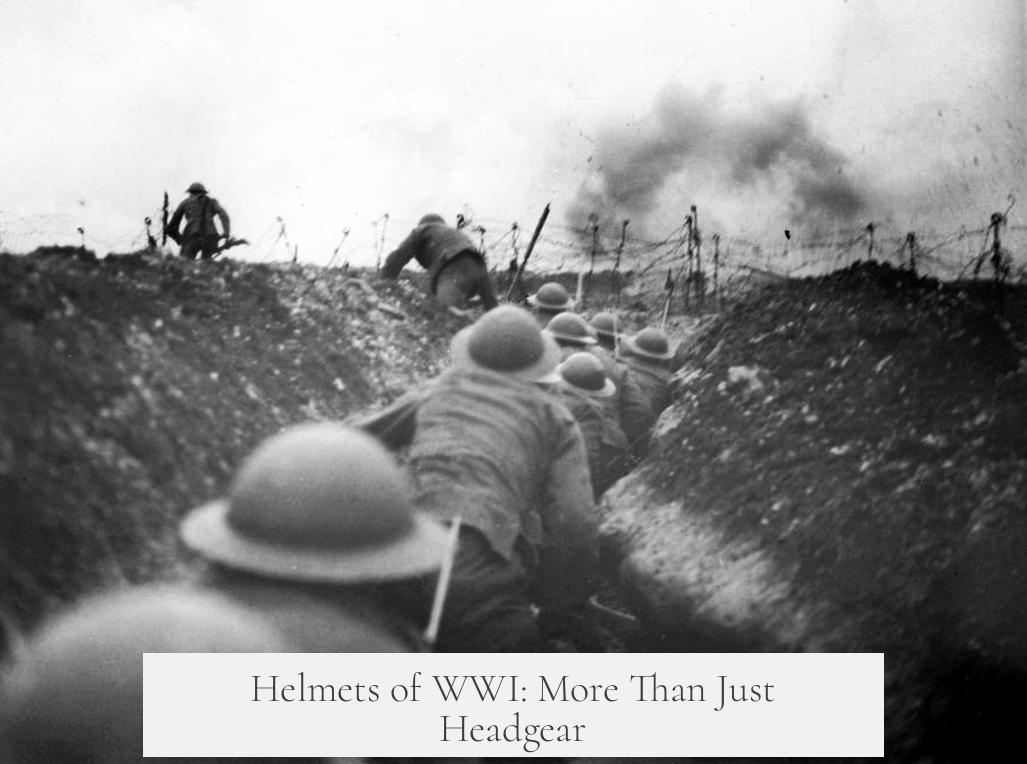
What were the helmets of WWI really like? They weren’t just about fashion or uniformity. These helmets told stories — about the cultures of armies, the evolution of military technology, and even battlefield survival strategies. Let’s dive into the fascinating details behind these seemingly simple pieces of gear.
German Helmets: The Iconic Badasses
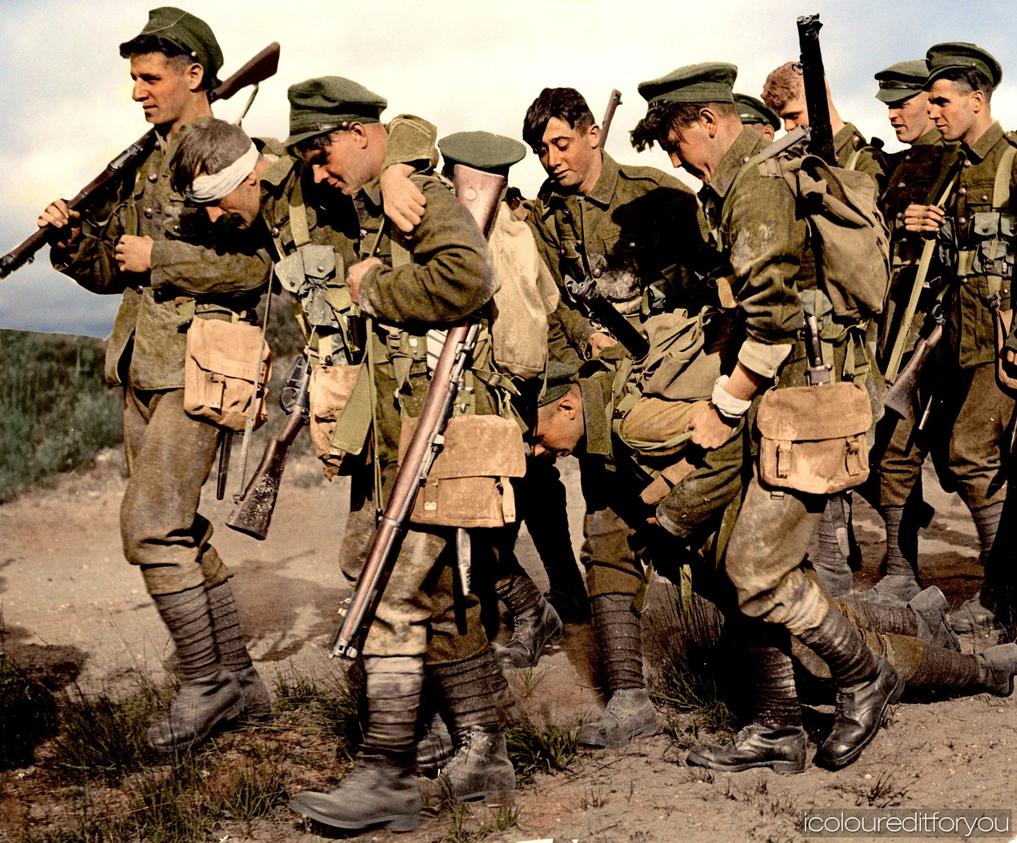
Anyone who’s ever seen the helmets worn by the German soldiers during WWI can’t deny they look downright cool. Those designs had swagger. The Prussian helmets, for instance, are basically the rock stars of the Great War’s headgear world. If you’ve ever wondered why Germans always end up looking like the most badass militaristic figures in any historical reenactment or movie, the helmet is a major reason.
Back when the war kicked off, everyone seemed to be wearing the “Pickelhaube,” a spiky leather helmet that screamed “I’m ready for battle” — and possibly a horsehair fashion show. While it might look sharp, the spike wasn’t just flair. In some cases, it held a plume of horsehair, especially on cavalry helmets like the Russian “Helmet of Yaroslav Mudry” and some Prussian models. But did anyone actually try to stab an enemy with that pointy top? A childhood fantasy maybe, but realistically—no. It was more ornamental than practical in combat.
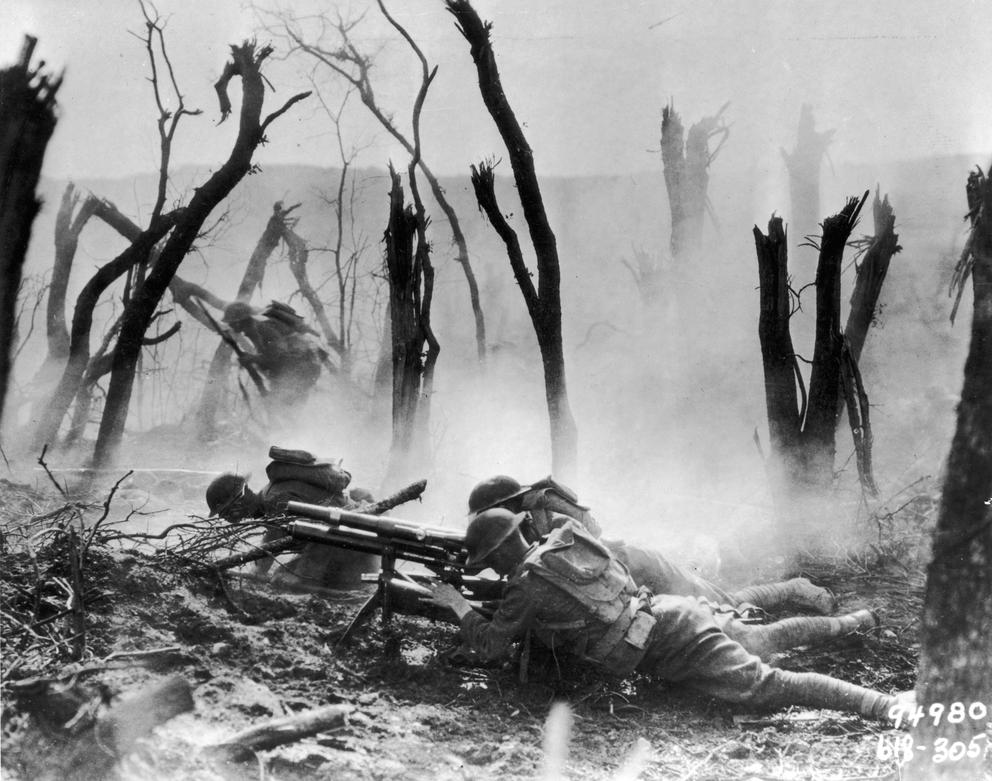
As the war dragged on and trench warfare became the brutal norm, the Germans innovated. They came out with a new design affectionately nicknamed the “German Trench Helmet.” If Darth Vader had worn a WWI helmet, this would’ve been it. Its sleek, intimidating look isn’t just for show — it provided better protection around the head, especially targeting the cerebellum. Interestingly, after the war, medical studies confirmed that German soldiers suffered less cerebellar damage compared to others. Their helmet saved more brain cells.
British and American Helmets: The Skillet Mystery
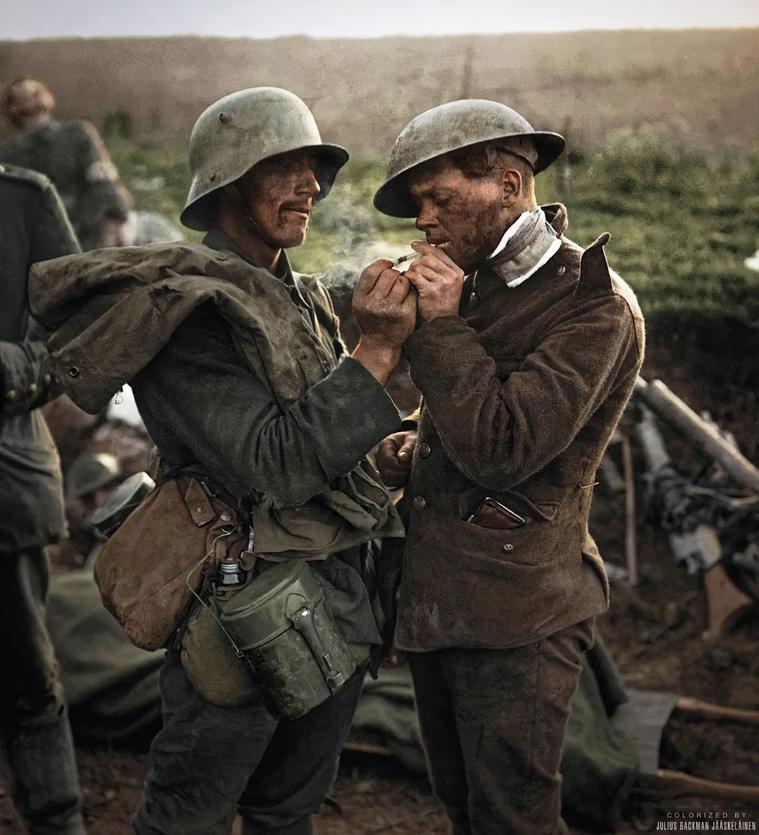
Meanwhile, across the Channel and across the Atlantic, British and American soldiers had a very different look on their heads. Their helmets have been described as “skillet-esque,” which is a fancy way of saying they look like frying pans glued to the top of soldiers’ heads. If you’ve played TF2, the popular video game, you might have noticed that these helmets resemble the “Proof of Purchase” item — a steel pan knocked into protective gear.
How protective were these helmets? Well, not great for the sides of the head. They mostly covered the crown. One wonders if designers prioritized quick manufacturing or style over full-protection. Maybe they figured if you got sniped on the side of the head, you had a bad day regardless of helmet coverage. Yet, millions of soldiers wore these helmets into battle, hoping to dodge shrapnel and random debris raining down from the skies.
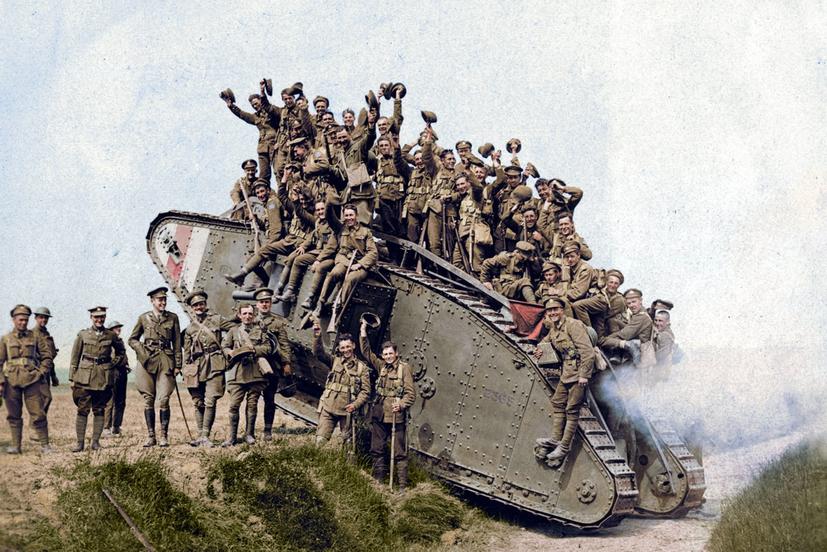
Russian Helmets: The Hidden Players
Here’s a fact many might not expect: the Russians actually had helmets in WWI. But don’t get too excited about spotting them in every trench photo — these helmets were extremely rare and limited in use. Why so rare? It boiled down to Russia’s older military traditions and logistical constraints. Steel helmets just weren’t rolling off the supply lines as fast as they were in Western Europe.
The early Russian helmet, known as the “Helmet of Yaroslav Mudry,” was steeped in tradition. Like some German models, it featured a spike that cavalry units used to affix a horsehair plume. This blend of old-world pomp and modern protection created a unique look on the battlefield.
The Pickelhaube Spike: Fashion or Funky Function?
The spike on the Pickelhaube raises more than a few questions. Was it there just to hold horsehair? In part, yes. That spike was primarily meant to mount a plume, especially for formal or parade occasions. However, kids (and perhaps some grown-ups) imagined it as a handy bayonet substitute, stabbing enemies close-up. Entertaining idea, but a helmet spike isn’t ideal for a poke fight—imagine the awkward angles and potential self-injury.
But here’s something to think about: design wasn’t solely for protection or intimidation. The Pickelhaube was a symbol of pride and tradition before the harsh realities of trench warfare shaped protective needs. Its spike tells a story of a military caught between showy customs and a brutal, modern war.
What Do These Helmet Stories Teach Us?
Looking at WWI helmets reveals how form and function collide on the battlefield. The German helmets balanced style and improved survival odds. The British and American helmets emphasized mass production and practicality. The Russians maintained ceremonial hints even in combat gear.
Design evolution during WWI wasn’t just about looks or innovation; it was a direct response to the war’s demands. Soldiers’ lives depended on the helmet’s ability to protect against shrapnel and bullets. The German trench helmet’s improved cerebellar coverage reduced devastating brain injuries, a fact confirmed through medical scrutiny after the war.
What’s your take? Would you trust a “skillet” helmet, or do you prefer the sleek, Darth Vader-inspired German designs? Maybe you’re partial to the ornate, plume-decked Russian helmets for that touch of cavalry glam. Whatever the case, each helmet has a story worth sharing—one that blends history, survival, and a dash of headgear swagger.
Final Thoughts
Helmets of WWI are more than just relics. They’re windows into the mindset of armies grappling with new types of warfare. They remind us that even tough soldiers needed a bit of style—and that sometimes, saving your brain meant thinking longer and deeper about the shape of a helmet.
What made the German helmets of WWI stand out in design?
German helmets provided unique cerebellar protection. They covered the back of the head well, reducing certain war injuries. Their shape also grew popular, often seen as visually striking and iconic.
Why did the British and American helmets have a “skillet” shape?
The design focused mainly on protecting the top of the head. Despite criticisms for limited coverage, it was a standard that balanced protection with production needs.
What was the purpose of the spike on the Pickelhaube helmet?
The spike held horsehair plumes for decoration, especially in cavalry units. It was not intended as a weapon but a practical holder for ornamental purposes.
Did Russian soldiers commonly wear helmets during WWI?
Russian helmets were rare and likely limited in issue. One notable type, the Helmet of Yaroslav Mudry, was used by cavalry and featured the spike for horsehair plumes.
Were Pickelhaube spikes ever used as weapons in combat?
There is no evidence soldiers used the spikes as bayonets. The design was decorative, and such use would have been impractical on the battlefield.
